Nanna di Niccolo di Luigi Guicciardini 1369 y 1429
Carlo Orsini, Signore di Bracciano 13881445
Paola Gironima Orsini 1388-1425



Diego Fernández de Córdoba y Carrillo ( 1355-15 de noviembre de 1435), I señor de Baena, mariscal de Castilla, y fiel servidor de los reyes Juan I, Enrique III, y Juan II de Castilla. ue descendiente directo de Fernán Núñez de Témez, el genearca de la Casa de Córdoba, y del adalid y alguacil mayor deSevilla, Domingo Muñoz, quienes estuvieron con el rey Fernando el Santo en el año 1240 en la conquista de Córdoba donde fueron heredados. Diego fue hijo tercero de Gonzalo Fernández de Córdoba y Biedma, I señor de Aguilar, III señor de Cañete de las Torres, I señor de Priego y alguacil mayor de Córdoba, y de María García Carrillo.
Juan de Gante, duque de Lancaster (6 de marzo de 1340 - 3 de febrero de 1399) fue un noble inglés, cuarto hijo varón —pero tercero superviviente— del rey Eduardo III de Inglaterra y de Felipa de Henao.
- El título de Gediminas en latín: Gedeminne Dei gratia Letwinorum et multorum Ruthenorum rex1
Que traduce como:
- "Gediminas, por la Gracia de Dios, de los Lituanos y de muchos Rutenos, rey"1
En sus cartas al papado de 1322 y 1323, añade Princeps et Dux Semigallie (príncipe y duque de Semigalia). 2 En el bajo alemáncontemporáneo se le llama simplemente Koningh van Lettowen, reflejando el latín Rex Lethowye (ambos "Rey de Lituania"). 1 El derecho de Gediminas a usar el término latino rex, que el papado se proclamaba como poseedor del derecho de otorgarlo desde el siglo XIII, es objeto de controversia en algunas fuentes católicas. Así, es denominado rex sive duke ("rey o duque") por una fuente; asimismo el Papa Juan XXII, en una carta al rey de Francia, se refiere a Gediminas llamándole "el que se llama a sí mismo rex", aunque cuando mantiene correspondencia con el propio Gediminas sí le llama rex ( regem sive ducem). 2
Se tiene por supuesto que Gediminas fue palafrenero de Vitenis, Gran Duque de Lituania, pero es más probable que se tratara de un hermano menor de Vitenis e hijo de Butvidas (Pukuwer), otro gran duque lituano. En cualquier caso, el origen ruríkida que se le atribuyó posteriormente es una farsa. De acuerdo a las últimas investigaciones, incluso su abuelo no se puede identificar claramente. Gediminas llegó a ser gran duque (en lituano: didysis kunigaikštis) en 1316, con cuarenta años, y gobernó por 25 años
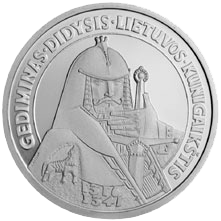


Margarita de Brieg (1342/43–1386
A través de su herencia paterna también fue rey de Bohemia (entre 1346 y 1378) y conde de Luxemburgo (entre 1346 y 1353). Fue llamado Wenceslao, pero tras su confirmación se cambió el nombre por Carlos.
Armando II de Celje (en húngaro: Cillei Hermann, en alemán: Hermann II. von Cilli, en croata: Herman II. Celjski) (c. 1360 – Bratislava, 13 de octubre de 1435), aristócrata húngaro de origen esloveno, conde de Celje, gobernador de la región de Croacia-Eslavonia, heredero al trono bosnio. Suegro, consejero y persona de mayor confianza del rey Segismundo de Hungría(posteriormente también rey de Bohemia y emperador germánico).
Armando II nació cerca de 1360 como hijo de Armando I de Celje (1332/1334 - 1385) y de la princesa bosnia Catalina Kotromanic.
Ana de Schaunberg (c. †1396), hija del conde Enrique VII de Schaunberg
Il est appelé dans les chroniques de l'époque William de La Poole dit « Guillaume la Poule », comte de Suffort 2.
Il est le fils de Michael de la Pole (en), 2e comte de Suffolk, et de Katherine, fille de Hugh Stafford, 2e comte de Stafford. Il est le petit-fils de Michael de la Pole, 1er comte de Suffolk, chancelier d'Angleterre, et l'arrière-petit-fils de William de la Pole, marchand de laine et financier.
Fernando I de Aragón (Medina del Campo, 27 de noviembre de 1380 - Igualada, 2 de abril de 1416). Llamado tambiénFernando de Trastámara, Fernando de Antequera, Fernando el Justo y Fernando el Honesto, fue infante de Castilla, rey deAragón, de Valencia, de Mallorca, de Sicilia, de Cerdeña y de Córcega; duque de Neopatria y de Atenas; conde de Barcelona, deRosellón y de Cerdaña; y regente de Castilla. Fue el primer monarca aragonés de la dinastía castellana de los Trastámara, si bien era Aragón (como el resto de los pretendientes al trono en el Compromiso de Caspe) por la rama materna, pues su madreLeonor de Aragón era hermana de Martín I de Aragón, llamado el Humano.2 3

Isabel de Castellbó fue condesa de Foix, vizcondesa de Castellbó, y vizcondesa de Bearne, entre otros títulos (véase los títulos en su antecesor). Sucedió a su hermano Mateo I, fallecido en agosto de 1398 sin sucesión.
Nació en Trino, Piamonte, y era hijo del conde Teodoro II de Montferrato, con quien colaboró en el gobierno del marquesado desde 1404. Su autentico nombre era Juan Jaime de Monferrato, y era nieto de Isabel I de Mallorca. Su segundo nombre viene dado en nombre del hermano de la reina titular de Mallorca, Jaime IV de Mallorca y de su bisabuelo, Jaime III de Mallorca.
Yolande, Duchess of Lorraine, also known as Yolande de Bar (2 November 1428, Nancy – 23 March 1483, Nancy), was Duchess of Lorraine (1473) and Bar (1480). She was the daughter of Isabella, Duchess of Lorraine, and René of Anjou (King of Naples, Duke of Anjou, Bar and Lorraine, Count of Provence). Because of her various titles she is also known as Yolande de Lorraine and Yolande d'Anjou. Her younger sister was Margaret of Anjou, Queen consort of Henry VI of England. Though she was nominally in control of major territories, she ceded her power and titles to her husband and her son.
 ç
Pierfrancesco de Lorenzo de Médici, conocido como El Viejo, ( Florencia, 1430 - 19 de julio de 1476), banquero italiano de la familia Médici.
Laudomia Acciaiuoli
Galeazo Maria Sforza, ( 24 de enero de 1444 – 26 de diciembre de 1476); Duque de Milán. Era un miembro de la familia Sforza, los gobernantes de Milán, famosos como patrocinadores de las artes y música. Galeazo María Sforza también fue conocido por llevar una vida lujuriosa y ser cruel y tiránico.
Juan Salviati y de Elena Gondi Buondelmonti,
Lorenzo de Médici (en italiano: Lorenzo di Piero de' Medici; Florencia, 1 de enero de 1449 - Careggi, 9 de abril de 1492), también conocido como Lorenzo el Magnífico por sus contemporáneos, fue un estadista italiano y gobernante de facto1 de la República de Florencia durante el Renacimiento italiano. Príncipe de Florencia, mecenas de las artes, diplomático, banquero, poeta y filósofo renacentista, perteneciente a la familia Médici, y también bisabuelo de la reina Catalina de Médici.
Su vida coincidió con la cúspide del Renacimiento italiano temprano; su muerte marca el final de la Edad de Oro de la ciudad de Florencia. La frágil paz que ayudó a mantener entre los distintos estados italianos terminó con su muerte. Los restos de Lorenzo de Medici reposan en la Capilla de los Médici en la Basílica de San Lorenzo ( Florencia).
Se educó primero en Venecia, más tarde fue enviado a Milán con sólo diecinueve años en representación de su padre, Pedro de Médici. Siendo Lorenzo aún joven, Pedro lo envió a numerosas misiones diplomáticas. Entre ellas se cuentan viajes a Roma para ver al Papay a otras figuras políticas y religiosas.
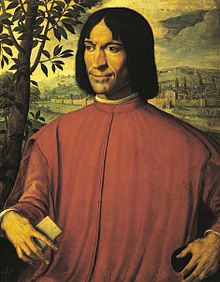
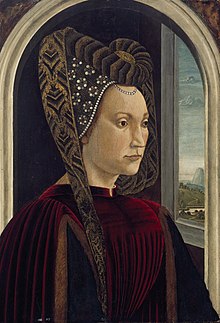

Álvaro de Zúñiga y Guzmán, también de Estúñiga, de Stúñiga o de Stunica (circa 1410 - Encinas, Provincia de Valladolid, 10 de junio de 1488 - Béjar, Provincia de Salamanca) fue tronco de la casa de Zúñiga, justicia mayor de Castilla y alguacil mayor de Castilla. Primer caballero del reino, declarado por el rey Enrique IV el 3 de mayo de 1464, alcaide de la fortaleza de Burgos, administrador del maestrazgo de la Orden de Alcántara, II conde de Plasencia, creado I duque de Arévalo en 1469 por merced del rey de Castilla, Enrique IV, revertido a la corona de Castilla por los Reyes Católicos y creado I duque de Plasencia, Grande de Castilla en 1480, I conde de Bañares y I duque de Béjar, Grande de Castilla otorgados por la reina Isabel I en 1485, ricohombre de Castilla, señor de Zúñiga y Mendavia en Navarra, y de Béjar y Bañares, en Castilla y, por herencia de su madre Isabel de Guzmán y Ayala, VIII señor de Gibraleón.
, Leonor Pimentel y Zúñiga, hija de Juan Alonso Pimentel, conde de Mayorga, y de su hermana Elvira de Zúñiga y Guzmán.
Pedro Álvarez de Osorio, I conde de Lemos 1430-80
María Bazán de Toledo 1470
|
|
Juana de Chatillon
Aunque de familia noble (era hijo de Arnaud, Señor de Albret), Carlos cayó prácticamente al rango de un plebeyo cuando la facción borgoñona ganó el poder en la corte francesa.
Sus dotes militares eran de gran calidad. Había aprendido a combatir bajo la égida de Bertrand Du Guesclin y siempre se había destacado como táctico genial y por su valor bajo fuego
María de Sully

Juana nació en el castillo de Conflans, Francia, el 28 de enero de 1311, hija del rey Luis I de Navarra y X de Francia, llamado El Obstinado, y de su primera esposa, Margarita de Borgoña. A la muerte de este y de su medio hermano Juan I fue excluida de la sucesión de ambos reinos, a favor de su tío Felipe V de Francia, que asumió la corona de ambos reinos, ante la situación provocada por su edad (tenía seis años), y en las dudas sobre su legitimidad debido al adulterio cometido por su madre. 1 Este ascenso al trono fue ratificado en los Estados Generales de París de febrero de 1317 en el que se prohibió la sucesión de la corona francesa a las mujeres. Sin embargo, no la excluía de reinar sobre Navarra, aunque su herencia sobre el reino pirenaico tardaría dos reinados en ser reconocida.
.
|
|
Juan II de Francia, llamado "el bueno" (en francés: Jean II le Bon) (Le Mans, 26 de abril de 1319 – Londres, 8 de abril de 1364), fue el segundo rey de Francia de la Casa de Valois. Era hijo de Felipe VI de Francia y Juana de Borgoña.

Bona de Luxemburgo nació con el nombre de Jutta (Judith), ( Praga, Bohemia 20 de mayo de 1315 - 11 de septiembre de 1349) fue duquesa de Normandía, condesa de Anjou y de Maine. Ella fue la primera esposa del rey Juan II de Francia, sin embargo, ya que su muerte se produjo un año antes de la coronación, ella nunca fue reina consorte de Francia. Jutta se hizo conocida en la historia francesa como Bona de Luxemburgo.
Galeazzo II Visconti (Milán, aprox. 1320 - Pavía, 4 de agosto de 1378) fue señor de Pavía, Como, Novara, Vercelli, Asti, Alba,Tortona, Alessandria y Vigevano, y señor de Milán (1349 - 1378) con sus hermanos Mateo II y Bernabé. Fue el hijo de Stefano Visconti y Valentina Doria. Junto con su hermano Bernabé, aunque no de común acuerdo, extendió los dominios de la familia, preparando el camino para el gran «Estado Visconteo», que habría estado definitivamente plasmado en su hijo Gian Galeazzo Visconti. Fue patrón de las artes y las letras y mecenas de Petrarca, a quien invitó a Pavía.
Siendo hija de Luis de Male, conde de Flandes, Rethel y Nevers; su madre era Margarita de Brabante (1323-1368), segunda hija de Juan III de Brabante.
Juan era hijo de Averardo de Médici, del que poco se conoce, y no había nacido rico; el poco dinero dejado por su padre debió dividirse entre la viuda y cinco hijos.
La información sobre Piccarda es escasa. Se sabe que era hija de Eduardo Bueri, quien pertenecía a una familia de antigua estirpe de origen florentino, pero que tenía intereses comerciales también en otras ciudades. De hecho, la familia se encontraba en Veronaal nacer Piccarda.
.
Nacido en una familia rica de la nobleza rural, se le puso el nombre de Giacomo o Jacopo Attendolo en Cotignola (Romaña). Su apodo Muzzo oMuzio procede de una abreviatura de su sobrenombre original Giacomuzzo. Según la tradición, el joven Giacomo se encontraba arando el campo cuando un grupo de mercenarios liderados por Boldrino da Panicale pasaron cerca reclutando. Giacomo robó uno de los caballos de su padre y les siguió para hacer carrera como soldado.
Inés del Maino, la única persona que el tímido y solitario Filippo alguna vez amó. Inés era hija de Ambrosio del Maino, un noble milanés y superintendente ducal. Inés sirvió como dama de honor a la esposa de Felipe,Beatriz Lascaris de Tenda
Diego Fernández de Quiñones (fallecido el 2 de noviembre de 1491), el primer conde de Luna en 1462, fue hijo de Pedro Suárez de Quiñones y de Beatriz de Acuña, hija deMartín Vázquez de Acuña y de su segunda esposa María de Portugal.
Diego López de Zúñiga ( Castañares, Burgos, ca. 1350 – Valladolid, noviembre de 1417) fue un noble, ricohombre de Castilla y Navarra, señor de Zúñiga y Mendavía en Navarra, de Béjar y Castella en Castilla, señor de Baides, Bañares, Curiel, Grañón, Monterrey y otras villas más, consejero de los reyes de Castilla y León Juan I de Castilla , Enrique III de Castilla y Juan II de Castilla , alguacil mayor de Castilla y León, justicia mayor con poderes extraordinarios de Castilla y León desde el reinado de Enrique III, co-regente durante las minorías de edad de los reyes Enrique III y Juan II.
Su madre era Juana de Orozco, una hija de Iñigo López de Orozco, frontero mayor de Lorca y de su esposa María de Meneses. Diego se casó con Juana García de Leiva, señora de Villavaquerín, hija de Juan Martínez de Leiva y de María Díaz de Cevallos, además era nieta materna del señor Diego Gutiérrez de Cevallos, XIV almirante mayor de Castilla desde 1303, y supuesta bisnieta paterna de Sancho Martínez de Leiva "el Brazo de Hierro", vasallo de los reyes de Castilla y de Inglaterra, y de su esposa la princesa Isabel, hija del rey Eduardo III de Inglaterra. [cita requerida] Las capitulaciones matrimoniales y la escritura de dote dado por los reyes de Castilla, Pedro I, y de Navarra, Carlos II, fueron otorgadas en 1369. 2 Diego tuvo en su matrimonio con Juana cinco varones y 3 mujeres y en otras señoras tres varones bastardos. Diego creó mayorazgos para todos sus hijos varones, inclusive para sus bastardos. 3
María Pacheco, señora de Belmonte y su tierra, hija única y heredera de Juan Fernández Pacheco e Inés Téllez de Meneses y nieta del portugués Diego López Pacheco.
Pedro Fernández Portocarrero (V Señor de Moguer)[editar]
Su vida coincidió con el reinado de Juan II, perteneciendo a su consejo. Fue V Señor de Moguer y IV Señor de Villanueva del Fresno aproximadamente desde 1418, año del testamento de su padre. Sirvió como leal auxiliar a los intereses de don Álvaro de Luna. Después el linaje entroncó por casamiento con los Villena. Estos dos hechos permitieron a los Portocarrero, señores de Moguer, ocupar un rango elevado dentro de la jerarquía nobiliaria del siglo XV.
El maestre Fadrique Alfonso de Castilla tuvo dos hijos ilegítimos, según la mayoría de los historiadores, con una dama de la familia Angulo de Córdoba, aunque existe una gran confusión acerca de su identidad, ya que algunos autores, basándose en lo afirmado por otros, señalaron que esa dama se llamaba Constanza, que era hija de los nobles cordobeses Lope Alfonso de Angulo y Elvira Díaz de Aguayo, que falleció en 1370, y que otorgó testamento el día 16 de mayo de ese mismo año en la ciudad de Córdobaante Juan González y Antón Ruiz mencionando que era la madre del conde Pedro Enríquez y del futuro almirante Alonso Enríquez, aunque otros autores indican que en él solamente se afirmaba que era la madre del «conde Pedro» Enríquez, como ya señaló en el siglo XVIII el padre Francisco Ruano en su obra Casa de Cabrera en Córdoba.
Sin embargo, otros autores aseguran que la madre de Leonor Enríquez y del conde Pedro Enríquez se llamaba Leonor o Leonor Manuel de Angulo, y José Pelliceraseguró que fue señora de Mansilla e hija de Luis Manuel y de Beatriz Angulo de Córdoba.
De esa relación nacería, el 11 de abril de 1357, un joven a quien fue puesto el nombre de Juan, al que su padre confiaría la custodia a su abuelo materno, Lourenço Martins, con la finalidad de educarlo y transformarlo en caballero, siendo más tarde maestre de la Orden de Avis. Fue este mismo Juan que ascendería al trono durante la crisis de 1383-1385, con el nombre de Juan I.
De Teresa no se sabe si siguió al lado de su hijo y su padre o se casó nuevamente, y menos de su vida.
Juan de Gante, duque de Lancaster (6 de marzo de 1340 - 3 de febrero de 1399) fue un noble inglés, cuarto hijo varón —pero tercero superviviente— del rey Eduardo III de Inglaterra y de Felipa de Henao.
Blanca de Lancaster (1345-1369) fue una aristócrata inglesa.
Nacida bastarda, en 1354 sus padres se casan secretamente, a pesar de la resistencia de su abuelo Alfonso IV de Portugal y la nobleza portuguesa. Al año siguiente, su madre moriría asesinada en Coímbra por orden de Alfonso IV.
Inés Pires fue una dama portuguesa, hija de Pedro Esteves da Fonte Boa y de María Anes. Estando en Veiros conoció al futuro Juan I, por esas fechas maestre de la Orden de Avis. Ambos eran adolescentes de unos catorce años de edad.
Natural de Reboreda, después de su matrimonio con el condestable Nuno Álvares Pereira, vivió en Pedraça, en el solar conocido como Casa da Torre. Cuando en 1377 el rey Juan I de Portugal convocó las cortes en Braga, Nuno participó como procurador de los hidalgos del reino. Estando en las cortes, recibió la noticia de que Leonor se encontraba muy enferma. Cuando llegó a Oporto, donde se encontraba su esposa, ya esta había fallecido. Fue sepultada en el Convento de las Monjas Dominicanas de Vila Nova de Gaia.
John I, Count of Nassau-Dillenburg (German: Johann I. von Nassau-Dillenburg, Dutch: Jan I van Nassau-Dillenburg; c. 1340 – 4 September 1416, Keppel) was a Count of Nassau in Siegen and Dillenburg. He was a son of Count Otto II of Nassau and Aleyda, Countess of Vianden.[1]
Margareta of the Marck on 30 November 1357. She was the daughter of Adolph II of the Marck and Margareta of Cleves.
John III of Wassenaer, Lord of Polanen (1340 – 10 August 1394) was Lord of Polanen (a heerlijkheid south of Monster). The Lords of Polanen were a branch of the House of Wassenaer. He held extensive possessions besides the fief of Polanen.
He was the eldest son of John II ( c. 1324 – 1378), from his first marriage to Oda of Horne (1318-1353). In 1353, his father inherited the extensive possessions of William of Duivenvoorde and in the same year, he purchased the Barony of Breda from the Duke of Brabant. When John II died in 1378, John III inherited most of these possessions.
Countess Oda of Salm-Ravenstein (1370-1428)
Por causa de su matrimonio con María, duquesa de Auvernia hija de Juan I de Berry en el año 1400 su padre le elevó a Conde de Clermont, pero la muerte de éste en 1410 le dio el título de duque de Borbón y conde de Forez, seis años después la muerte de su suegro le convirtió en duque de Auvernia y conde de Montpensier.
Il était fils de Bertrand IV, seigneur de la Tour et de Montgascon, et de Marie Ire, comtesse d'Auvergne et de Boulogne.
Owain ap Maredudd (conocido también por Owain ap Maredudd ap Tudur u Owen Tudor) (c. 1400 - 2 de febrero de 1461) era un soldado galés y cortesano, descendiente directo del Señor de Rhys Rhys ap Gruffydd, aunque es solamente recordado por su papel en la fundación de la Dinastía Tudor y por su relación con Catalina de Valois (Catalina de Francia), viuda del rey Enrique V de Inglaterra. De alguna manera, Owain anglificó su nombre del galés Owain ap Maredudd al de Owen Tudor, tomando el nombre de su abuelo que le era más familiar y sencillo que el de su padre.
Eran padres de Goronwy, Señor de Tref-Gastel (d. 1268) que se casaría con Morfydd ferch Meyric, hija de Meuric de Gwent. Meuric era hijo de Ithel, nieto de Rhydd y biznieto de Iestyn ap Gwrgan(t). Iestyn había sido el último Rey de Gwent (reinó 1081 - 1091) antes de su conquista por los Normandos.
Goronwy y Morfydd eran los padres de Tudor Hen, Señor de Penmynydd (d. 1311). Se casó con Angharad ferch Ithel Fychan, hija de Ithel Fychan ap Ithel Gan, Señor de Englefield. Ellos fueron los padres de Goronwy Ap Tudor, Lord de Penmynydd (d. 1331).
Goronwy se casó a su vez con Gwerfy ferch Madog, hija de Madog ap David, Baron de Hendwr. Ellos fueron los padres de Tudor Fychan, Lord de Pemmynydd (d. 1367).
Tudor y Margarita eran los padres de Maredudd ap Tudor (d. 1406), que contrajo matrimonio con Margarita ferch Dafydd. Margarita era hija de Dafydd Fychan, Lord de Angleysey y de su esposa Nest ferch Ieuan.
Maredudd y Margarita eran los padres de Owen.


Jacquetta de Luxemburgo (c. 1415 - 30 de mayo de 1472), Duquesa de Bedford hasta 1435 y luego Baronesa de Bedford hasta 1448, finalmente fue Condesa de Rivers hasta su muerte.
Era hija del Conde de Saint Paul Pedro I de Luxemburgo y de Margarita del Balzo, descendiente de Simón de Montfort, VI conde de Leicester. Era prima del Emperador Segismundo de Luxemburgo.
George Douglas, 4th Earl of Angus, Lord Douglas, Abernethy and Jedburgh Forest (c. 1427 – 12 March 1463)[1] was a Scottish nobleman. He was the son of William Douglas, 2nd Earl of Angus and Margaret Hay of Yester. Known as the Great Earl of Angus,[2] he succeeded to the Earldom following the death of his childless brother James Douglas, 3rd Earl of Angus in 1446.[1] He was to become the first Red Chief of Douglas.
Isabella Sibbald daughter of Sir John Sibbald of Balgonie, Master of the Household to James II.
Robert Boyd, 1st Lord Boyd (died c. 1482) Lord Boyd, was a Scottish statesman.
Robert Boyd belonged to an old and distinguished family, of which one earlier Sir Robert Boyd, had fought with Sir William Wallace and Robert The Bruce. He was the son and heir of Sir Thomas Boyd of Kilmarnock (died 9 July 1439). Robert married Mariot (or Janet), daughter of Sir Robert Maxwell of Calderwood.
Sir Malcolm Drummond, of Cargill & Stobhall (Drummond), Knight
Alexander Lindsay, 4th Earl of Crawford (1423–1453) was a late mediaeval Scottish nobleman, and a magnate of the north-east of that country.
Eberhard II, called "der Greiner" (the Jarrer) (after 1315 – 15 March 1392, Stuttgart), Count of Württemberg from 1344 until 1392.

Jan I of Żagań ( Polish: Jan I żagański) ( c. 1385 – 12 April 1439) was a Duke of Żagań- Głogów, since 1397 (until 1412 with his brothers as co-rulers), since 1403 Duke of Żagań, Krosno Odrzańskie and Świebodzin (again, until 1412 with his brothers as co-rulers) and since 1412 sole ruler of Żagań and Przewóz.
Duke William of Opava ( Czech: Vilém Opavský; c. 1410 – 15 August 1452) was a member of Opava branch of the Bohemian Přemyslid dynasty. He was Duke of Opava from 1433 to 1452 and Duke of Münsterberg from 1443 to 1452.
She died in 1386 and was buried in the Cathedral in Ratzeburg.
Magnus (1324–1373), called Magnus with the Necklace ( Latin: Magnus Torquatus) or Magnus II, was Duke of Brunswick-Lüneburg, ruling the Brunswick-Lüneburg principalities of Wolfenbüttel (colloquially also called Brunswick) and, temporarily, Lüneburg.
Count Henry II of Holstein-Rendsburg (nickname Iron Henry; c. 1317 – c. 1384) was count of Holstein-Rendsburg and pledge lord of Southern Schleswig. He ruled jointly with his younger brother, Count Nicholas (d. 1397).
Henry was the elder son of Count Gerhard III and Sophia of Werle. Henry was a major European player as a mercenary leader and a typical representative of the late medieval knighthood. He fought in Italy, Russia, Estonia and France. He served in the English and Swedish armies. In 1367, he was commander of a fleet of the Hanseatic League and in 1368, he conquered Copenhagen. Count Henry II and his brother Nicholas vigorously defended their claims in Holstein and Schleswig, against Denmark and against the Frisians.
Catherine of Henneberg ( German: Katharina von Henneberg ; c. 1334, Schleusingen – 15 July 1397, Meissen) was a Countess of Henneberg by birth and from 1347 by marriage Margravine of Meissen, Landgravine of Thuringia, etc. She was the wife of Margrave Frederick the Severe of Meissen. Via her, the House of Wettin inherited her father's Franconian possessions.
Catherine was the second of four daughters of Count Henry IV of Henneberg-Schleusingen and his wife Judith of Brandenburg-Salzwedel.
Veronica of Hohenzollern
Siemowit IV ( Ziemowit IV), also known as Siemowit IV the Younger (pl: Siemowit IV Młodszy; ca. 1353/1356 [1] – 21 January 1426 [2]), was a Polish prince member of the House of Piast from the Masovian branch, from 1373/74 Duke of Rawa, and after the division of the paternal inheritance between him and his brother in 1381, ruler over Rawa, Płock, Sochaczew, Gostynin, Płońsk and Wizna, since 1386 hereditary Polish vassal, since 1388 ruler over Belz, during 1382-1401 he loss Wizna and during 1384-1399 and 1407-1411 he loss Zawkrze, during 1384-1399 he loss Płońsk, taken by the Teutonic Order.
Boček II of Poděbrady (also: Boček II of Kunštát and Poděbrady; German: Boček II. von Kunstadt und Podiebrad or Botschek von Podiebrad or Botschek der Ältere von Podiebrad; Czech: Boček II. z Poděbrad or Boček II. z Kunštátu a Poděbrad or Boček starší z Poděbrad; died: 1417) may have been treasurer or even chief treasurer of Bohemia between 1377 and 1387. Between 1403 and 1408, he held the office of Oberstlandschreiber ("chief administrator") of Bohemia.
It is not known when and where Boček II was born. His parents were Boček I of Poděbrady and Elisabeth of Lichtemburk ( German: Elisabeth von Lichtenburg; Czech: Eliska z Lichtemburka), a daughter of Henry of Lichtenburg at Žleby Castle. Boček was named after the founder of the Poděbrady branch of the House of Kunštát. Boček is sometimes called "the Elder", to contrast him with his son Boček III of Poděbrady, who was called "Boček the Younger".
Anna Elisabeth Lipa (Czech: Anna Eliška Lipá), a daughter of Henry of Leipa (Czech: Jindřich Lipá)
Sophia of Brunswick-Lüneburg (1358–28 May 1416), daughter of Magnus II, Duke of Brunswick-Lüneburg
He was the son of Henry I, the Admirable and his wife Agnes, née Countess of Meissen. Henry the Admirable founded the Principality of Grubenhagen in 1291, after the Guelph princes had divided their inheritance. Ernest originally intended to follow a spiritual career, but after his father's death, he and his brothers Henry II and William jointly ruled the principality.
Adelheid of Everstein-Polle (died after 29 September 1373), daughter of Count Henry II of Eberstein.
Duke Ernest I of Brunswick-Göttingen ( c. 1305 – 24 April 1367 [1]) was a member of the Guelph dynasty and was Duke of Brunswick-Göttingen from 1344 until his death.
Count Henry VI of Waldeck, nicknamed of Iron, ( c. 1340 – 16 February 1397 at Waldeck Castle) was Count of Waldeck from 1369 to 1397. The nickname of Iron refers to the fact that, due to his involvement in numerous wars and feud, he was often wearing armour. Although he was only the third reigning Count named Henry, he is generally known as Henry VI, because there had earlier been non-ruling counts named Henry II, Henry III and Henry V.
Elizabeth of Berg
Amadeus or Amedeo of Savoy (1363 – 7 May 1402) was the son of James of Piedmont and his third wife Marguerite de Beaujeu. By James' will of 16 May 1366, he was declared his firstborn (his elder half-brother was considered a traitor by their father) and heir. In 1367, he succeeded his father in his titles of Lord of Piedmont and Prince of Achaea. He was also the lord of Pinerolo.7
Catherine of Geneva
Albert IV of Austria (19 September 1377 – 14 September 1404) was a Duke of Austria.
John I, Count of Nassau-Dillenburg (German: Johann I. von Nassau-Dillenburg, Dutch: Jan I van Nassau-Dillenburg; c. 1340 – 4 September 1416, Keppel) was a Count of Nassau in Siegen and Dillenburg. He was a son of Count Otto II of Nassau and Aleyda, Countess of Vianden.[1]
Margareta of the Marck on 30 November 1357. She was the daughter of Adolph II of the Marck and Margareta of Cleves.
John III of Wassenaer, Lord of Polanen (1340 – 10 August 1394) was Lord of Polanen (a heerlijkheid south of Monster). The Lords of Polanen were a branch of the House of Wassenaer. He held extensive possessions besides the fief of Polanen.
He was the eldest son of John II ( c. 1324 – 1378), from his first marriage to Oda of Horne (1318-1353). In 1353, his father inherited the extensive possessions of William of Duivenvoorde and in the same year, he purchased the Barony of Breda from the Duke of Brabant. When John II died in 1378, John III inherited most of these possessions.
Countess Oda of Salm-Ravenstein (1370-1428).
Johann IV, Count of Katzenelnbogen (died 1444) was one of the last members of the younger line of the Hessian House of Katzenelnbogen. He ruled the reunited County of Katzenelnbogen.
His father was Diether VIII, a count of Katzenelnbogen from the younger line of the House of Katzenelnbogen, and ruled mainly in Upper Katzenelnbogen. Johann's mother was Elisabeth, a daughter of Adolph I of Nassau-Wiesbaden (1307–1370).
Anna of Katzenelnbogen
He was elder son of Count Eberhard III and Antonia Visconti. On 13 November 1397 he became engaged to Henriette of Mömpelgard. Henriette was the oldest daughter and main heiress of Henry of Mömpelgard, who died in 1396 one year before his father, Count Stephan of Mömpelgard. Their marriage, which occurred in 1407 at the latest, caused the county of Mömpelgard to become part of Württemberg. Eberhard IV also had a child with Agnes von Dagersheim.

Margaret of Joinville (French: Marguerite de Joinville; 1354-1418) was a French noblewoman. From 1365 until her death, she was the ruling Lady of Joinville and Countess of Vaudémont.
Count Walram IV of Nassau-Idstein (1354 – 7 November 1393) was a younger son of Count Adolph I of Nassau-Wiesbaden-Idstein and his wife Margaret of Nuremberg. He inherited Nassau-Idstein when his father died in 1370. When his brother Gerlach IIdied in 1386, he also inherited Nassau-Wiesbaden.
Bertha, the daughter of Count John I of Westerburg.
Anna, daughter of Count Louis XI of Oettingen,
Ulrich IV, Lord of Hanau (1330/40–1380) was Lord of Hanau from 1369 or 1370 until his death. Based on the estimated year his parents married, he is assumed to have been born between 1330 and 1340. He was the son of Ulrich III of Hanau and Adelaide ofNassau.
Elizabeth,[2][3] the daughter of Eberhard of Werthei
Henry II, Count of Nassau-Beilstein (died 1410) was the eldest son of Henry I and his wife, Imagina of Westerburg. He succeeded his father in 1388 as Count of Nassau-Beilstein and ruled jointly with his younger brother Reinhard.
Catherine of Randerode
Adelheid of Vianden, daughter of Philip of Vianden and Adelheid of Arnsberg
John III, Lord of Polanen ( c. 1325 – 3 November 1378 in Breda) was Lord of Polanen, Lord of De Lek and Lord of Breda.
Oda of Horne-Altena (1318-1353)
John III of Wassenaer, Lord of Polanen (1340 – 10 August 1394) was Lord of Polanen (a heerlijkheid south of Monster). The Lords of Polanen were a branch of the House of Wassenaer. He held extensive possessions besides the fief of Polanen.
He was the eldest son of John II ( c. 1324 – 1378), from his first marriage to Oda of Horne (1318-1353). In 1353, his father inherited the extensive possessions of William of Duivenvoorde and in the same year, he purchased the Barony of Breda from the Duke of Brabant. When John II died in 1378, John III inherited most of these possessions.
Countess Oda of Salm-Ravenstein (1370-1428)
Louis the Junker of Hesse (1305 – 2 February 1345) was a German nobleman. He was the third son of Landgrave Otto I ofHesse and his wife Adelheid, a daughter of Otto III of Ravensberg.
Elisabeth (or Elise), a daughter of Count Simon II of Sponheim-Kreuznach.
He was the elder son of John II of Nuremberg and Elisabeth of Henneberg. From the death of his father in 1357, Frederick bore the title of Burgrave and so was responsible for the protection of the strategically significant imperial castle of Nuremberg. His zeal in the imperial cause led Charles IV to elevate him in 1363 to be the first Burgrave of royal rank.
Elisabeth, a daughter of Adolph I of Nassau-Wiesbaden (1307–1370).
He was a son of Count Ulrich of Württemberg and Elisabeth of Bavaria, and the grandson and successor of Eberhard II. His reign was noted by a peace-preserving policy of alliances with the neighboring principalities and imperial towns. Examples are an alliances with 14 Upper-Swabian towns, concluded 27 August 1395 and the Marbachs alliance in 1405. An important military success was the victory against the Schlegel-Gesellschaft in 1395 near Heimsheim. Eberhard's most significant territorial acquisition was the county of Mömpelgard (now Montbéliard), which he secured through the engagement of his son, the later count Eberhard IV with Henriette, Countess of Montbéliard. Henriette was the granddaughter and heiress of Stephen of Montfaucon, count of Mömpelgard. Eberhard III governed the county of Mömpelgard till 1409, when he handed it over to his son Eberhard IV.

Henry I of Montfaucon (before 1318–1367) became Count of Montbéliard and Lord of Montfaucon through his marriage to Agnes, the daughter of Reginald of Burgundy, Count of Montbéliard. He ruled after the death of his brother-in-law Othenin the Mad, who was mentally handicapped and whose uncle, Hugh of Chalon, brother of Reginald of Burgundy, provided both the regency council and guardianship of his nephew.
Enrique de Brunswick-Lüneburg (del latín Henricus, murió el 14 de octubre 1416), duque de Brunswick-Lüneburg, llamado Enrique el Apacible, fue príncipe de Lüneburgdesde 1388 a 1409, junto con su hermano Bernardo I de Brunswick-Lüneburg, desde 1400 hasta 1409 fue también príncipe de Wolfenbüttel, y desde 1409 hasta su muerte, el único príncipe de Lüneburg.
Era el cuarto hijo de Magnus II de Brunswick-Lüneburg. Él participó en la persecución de los asesinos de su hermano Federico de Brunswick-Lüneburg, rey electo de los romanos, después de 1400. Enrique asoló el Eichsfeld, una posesión del arzobispo de Maguncia, quien era sospechoso de estar involucrado en el asesinato. Sólo en 1405, se ratificó una paz entre Brunswick-Lüneburg y el Arzobispado.
Catherine of Gorizia (died 1391) was a daughter of Count Meinhard VI of Gorizia and his first wife Catherine of Pfannberg.
Albert I was the eldest son of the Duke Ernest the elder of Grubenhagen and his wife, Adelheid of Eberstein. In 1359, his father made him co-ruler. After his father's death in 1361, he ruled the principality alone, except for a few possessions at Osterode and Herzberg, which he ceded to his brother Frederick. He lived alone at Salzderhelden Castle in Einbeck, which is why he was nicknamed "Duke of Salt".
His father was Ernest I (1305–1367), who assumed power in the Principality of Göttingen in 1345. After several years of co-regency in 1367, Otto took up government in this small and economically weak principality. Otto initially resided in the city of Göttingen, where he also held several large jousting tournaments. Over time, however, he had a number of disputes with the citizens of the city.
John I ( Portuguese: João, [ʒuˈɐ̃w̃]; 11 April 1357 – 14 August 1433) was King of Portugal and the Algarve in 1385–1433. He was called the Good (sometimes the Great) or of Happy Memory, more rarely and outside Portugal, in Spain, the Bastard, and was the first to use the title Lord of Ceuta. He preserved the kingdom's independence from Castile.
John was born in Lisbon as the natural son of Peter I by a woman named Teresa, who, according to Fernão Lopes, was a noble Galician. In the 18th century, António Caetano de Sousa found a 16th-century document in the archives of the Torre do Tombo, wherein she was named as Teresa Lourenço. In 1364, by request of D. Nuno Freire de Andrade, a Galician Grand Master of the Order of Christ, he was created Grand Master of the Order of Aviz, by which title he was known.

Born on 31 March 1360, Philippa was the oldest child of John of Gaunt, 1st Duke of Lancaster and Blanche of Lancaster. Philippa spent her infancy moving around the various properties owned by her family with her mother and her wet-nurse, Maud. [2] Here, she was raised and educated alongside her two younger siblings, Elizabeth, who was three years younger, and Henry, six years younger, who would later become King Henry IV. Philippa's mother died of plague in 1369. Her father remarried in 1371 to Infanta Constance of Castile, daughter of King Peter of Castile and on Constance's death in 1394, he married his former mistress, Katherine Swynford, who had been Philippa's governess. The affair and eventual marriage was considered scandalous, and in the future Philippa would protect herself against such embarrassment. [3]
Eleanor's brother was Ferdinand, 2nd Count of Alburquerque.
Victor of Kunštát and Poděbrady (also: Viktorin of Poděbrady, Victor Boček of Poděbrady, Victor Boček of Kunstadt and Poděbrady; Czech: Viktorín z Poděbrad, or Viktorín Boček z Kunštátu a Poděbrad; German: Viktorin von Podiebrad; 1403 – 1 January 1427 in Pardubice) was a Bohemian-Moravian nobleman and a member of the House of Poděbrady. He was supporter of the Hussites and father of the Bohemian King George of Poděbrady.
Victor was born into the noble Poděbrady family. His parents were Boček II of Poděbrady and Anna Elisabeth of Leipa (Czech: Anna Eliška Lipá), a daughter of Henry of Leipa (Czech: Jindřich z Lipé). He gave several of his sons the middle name of Boček, a name which many of his ancestors had had.
Anna of Wartenberg (Czech: Anna z Vartenberka; born: 1403; died: 1459
Catherine of Lorraine (1407 – 1 March 1439) was the wife of Margrave Jacob of Baden-Baden.
Přemek I, Duke of Opava' (or Przemko I) ( Czech: Přemysl I. Opavský; German: Přemysl I. von Troppau; born: c. 1365; died: 28 September 1433) was a member of the Opava branch of the Bohemian Přemyslid dynasty. He was Duke of Opava from 1367 until his death and Głubczyce from 1394 until his death. [1][2]
His parents were Duke Nicholas II of Opava and his third wife, Jutta (died: c. 1365), daughter of Duke Boleslaw II of Opole-Falkenberg. Nicholas died shortly after Přemek was born, and so Přemek stood under the regency and guardianship of his oldest half-brother John, who was the sole heir of the Duchy of Racibórz.
His parents were Půta II of Častolovice and Anna, a daughter of Duke Jan II of Oświęcim. Like his father, he owned the Lordship ofČastolovice and other territories in eastern Bohemia.
Dorothea von Rieneck (* um 1440 in Grünsfeld; † 24. März 1503 ebenda) war eine geborene Gräfin von Rieneck, Landgräfin von Leuchtenberg und Gräfin von Wertheim.
Dorothea von Rieneck wurde um 1440 als einziges Kind des Grafen Philipp d. Ä. von Rieneck und seiner Gemahlin Amalia geboren. Am 2. Oktober 1467 heiratete Dorothea Landgraf Friedrich V. von Leuchtenberg (1436–1487). Dieser Ehe entstammten drei Kinder: Amalie (* 1469), Johann IV. (1487–1531), der das Geschlecht der Landgrafen von Leuchtenberg im Mannesstamm fortsetzte, und Elisabeth († 1516).

Count Wolrad I of Waldeck ( c. 1399 – after 1 February 1475) was a son of Count Henry VII of Waldeck and his wife Margaret of Nassau-Wiesbaden-Idstein. He was named after his maternal grandfather, and was to first Wolrad in the House of Waldeck. He succeeded his father as the reigning Count of Waldeck-Waldeck in 1442 – whether this was before or after his father's death is still unclear. The House Waldeck had been split since 1397 into the senior Waldeck-Landau line and the junior Waldeck-Waldeck line.
Barbara von Wertheim, Tochter des Grafen Michael I. von Wertheim
|
|
|
|


























 ç
ç






















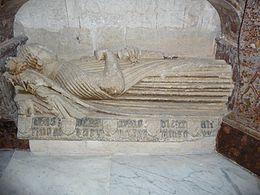



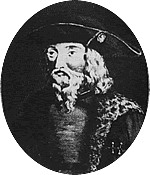
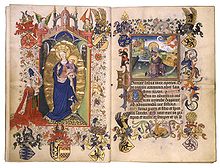




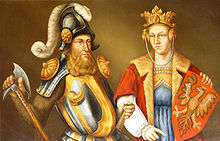


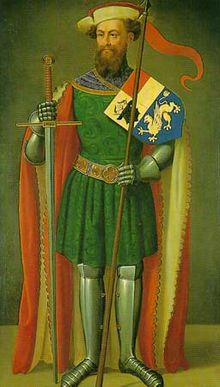









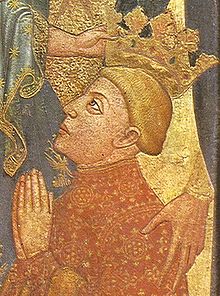





No hay comentarios:
Publicar un comentario